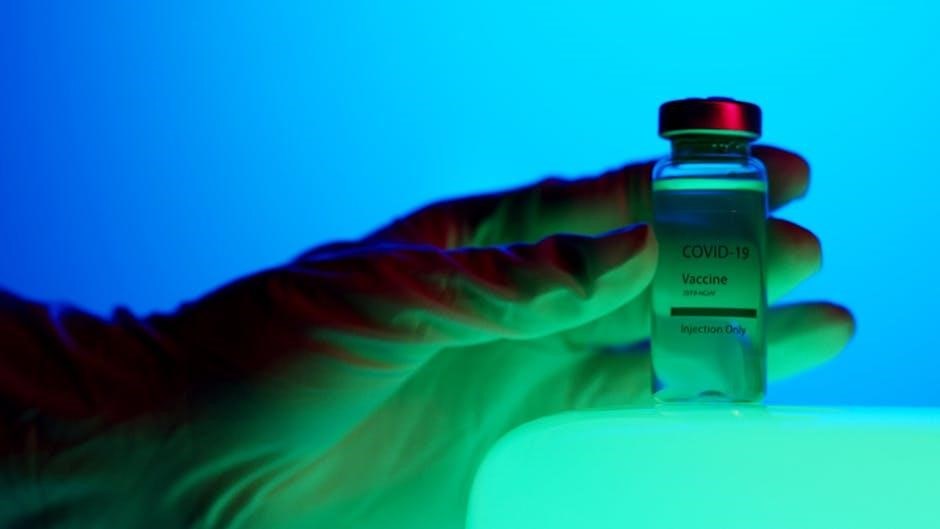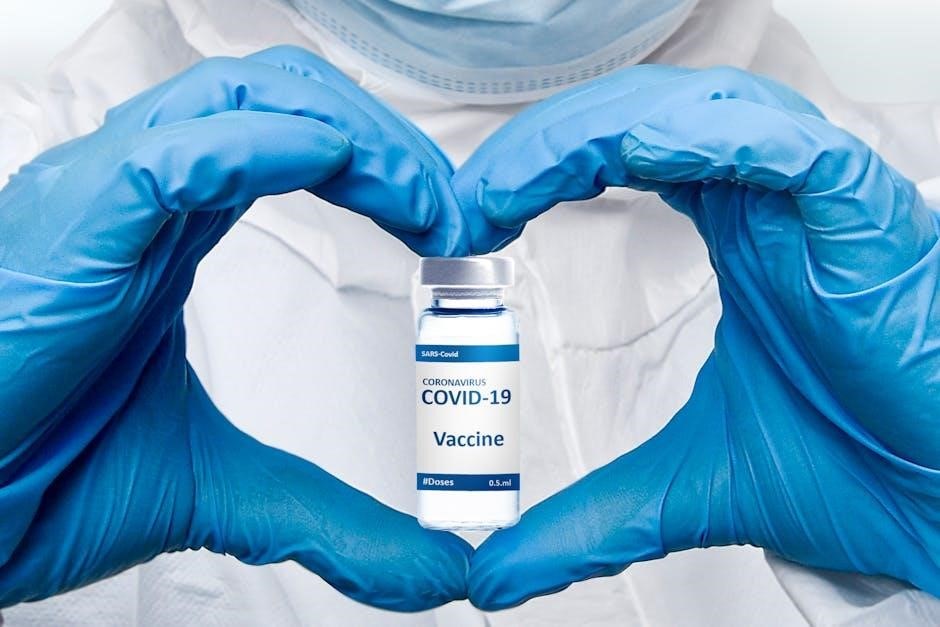AP Biology Unit 2 explores cell structure, function, and transport mechanisms, laying the foundation for understanding life at the cellular level. It covers essential concepts like membranes, organelles, and cellular processes, preparing students for advanced topics in biology. Mastering this unit is crucial for success on the AP exam, as it builds the framework for cellular biology and its applications.
Overview of Cell Structure and Function
Cell structure and function form the cornerstone of AP Biology Unit 2, focusing on how cells operate as the basic units of life. The cell membrane, a dynamic phospholipid bilayer, regulates the movement of materials through passive and active transport. Organelles like mitochondria, chloroplasts, and the endoplasmic reticulum perform specialized roles, such as energy production and protein synthesis. The cytoskeleton provides structural support and enables cell movement. Understanding cell size, surface area-to-volume ratio, and the organization of cellular components is crucial for grasping cellular function. This unit emphasizes the interconnectedness of cell structures and their roles in maintaining life, preparing students for advanced biological concepts.
Importance of Unit 2 in the AP Biology Curriculum
Unit 2 is foundational for understanding cellular biology, providing essential knowledge about cell structure, transport, and function. It bridges concepts from basic chemistry to complex biological processes. Students gain insights into how cells maintain homeostasis, communicate, and reproduce. Mastering this unit is critical for succeeding in later units, as it builds the framework for topics like genetics and ecology. Additionally, Unit 2 is heavily represented on the AP exam, with questions focusing on transport mechanisms, cell cycle regulation, and organelle functions. Strong performance in this unit significantly impacts overall exam scores, making it a key area for focused study and practice.

Key Concepts in Cell Structure
Cell structure includes membranes, organelles, and the cytoskeleton, each with unique functions. The cell membrane regulates transport, while organelles like mitochondria and chloroplasts manage energy and DNA. The cytoskeleton maintains shape and enables movement, essential for cellular processes and overall function.
Cell Membrane and Transport Mechanisms
The cell membrane is a phospholipid bilayer with embedded proteins, regulating the movement of materials through passive and active transport. Passive transport includes diffusion, osmosis, and facilitated diffusion, which require no energy. Active transport involves carrier proteins and energy, often against concentration gradients. Vesicular transport, like endocytosis and exocytosis, moves larger molecules. Understanding these mechanisms is vital for comprehending how cells maintain homeostasis, absorb nutrients, and expel waste. Practice questions on transport mechanisms, such as identifying types of transport and calculating water movement, are essential for mastering this topic in AP Biology Unit 2.
Organelles and Their Functions
Organelles are specialized structures within cells, each performing unique functions. The nucleus houses DNA, mitochondria generate energy through ATP production, and chloroplasts conduct photosynthesis in plant cells. The endoplasmic reticulum (ER) synthesizes proteins, while the Golgi apparatus modifies and transports them. Ribosomes are sites of protein synthesis, and lysosomes contain digestive enzymes. The smooth ER detoxifies and synthesizes lipids. These organelles work collaboratively to ensure cellular efficiency and survival. Practice questions often focus on identifying organelles and their roles, making them a critical area of study for AP Biology Unit 2 exams.
Cytoskeleton and Cell Shape
The cytoskeleton is a dynamic network of filaments that provides structural support, maintains cell shape, and facilitates movement. It consists of three main components: microtubules, microfilaments, and intermediate filaments. Microtubules, formed from tubulin subunits, are involved in processes like cell division and vesicle transport. Microfilaments, made of actin, play a role in muscle contraction and cell signaling. Intermediate filaments, such as keratin, provide mechanical stability. The cytoskeleton also aids in cell motility, such as amoeboid movement and ciliary action. Understanding its functions is crucial for AP Biology Unit 2, as practice questions often test its role in cellular structure and movement. Mastery of this topic enhances exam readiness.

Cellular Transport and Signaling
Cellular transport and signaling are essential processes that maintain cellular homeostasis. Passive transport includes diffusion and osmosis, while active transport requires energy. Signaling pathways enable communication between cells, regulating various functions. These mechanisms are crucial for understanding how cells interact and respond to their environment, making them a key focus in AP Biology Unit 2. Practice questions often test knowledge of transport types and signaling pathways, emphasizing their importance in cellular function and overall biology. Mastering these concepts is vital for success on the AP exam and beyond.
Passive Transport: Diffusion and Osmosis
Passive transport involves the movement of substances across cell membranes without energy expenditure. Diffusion is the random movement of particles from high to low concentration, essential for cellular exchange. Osmosis, a type of diffusion, specifically refers to water movement through selectively permeable membranes, crucial for maintaining cell hydration. These processes are fundamental in cellular function, enabling nutrient uptake and waste removal. Practice questions often assess understanding of concentration gradients and membrane permeability. Online quizzes and flashcards focus on distinguishing passive transport types and their biological significance. Mastering these concepts is essential for excelling in AP Biology Unit 2 and related assessments.
Active Transport and Vesicular Transport
Active transport requires energy to move substances against concentration gradients, often via carrier proteins. This process is vital for cellular functions like ion balance and nutrient uptake. Vesicular transport involves membrane-bound vesicles, such as endosomes and lysosomes, moving materials within or outside the cell. Exocytosis and endocytosis are key mechanisms, essential for cell signaling and waste removal. Practice resources include FRQs and online quizzes that test understanding of transport types and energy requirements. Flashcards help memorize transport mechanisms, while detailed explanations provide clarity. These concepts are critical for AP Biology Unit 2, as they underpin cellular logistics and communication, ensuring efficient cell operation and survival.
Cell Signaling and Communication
Cell signaling involves the transmission of information between cells, enabling coordination of activities like growth, differentiation, and response to stimuli. Key mechanisms include direct signaling via gap junctions and indirect signaling through hormones or paracrine factors. Ligand-receptor interactions trigger signaling cascades, often involving kinases and second messengers. Practice resources, such as FRQs and online quizzes, test understanding of signal types (autocrine, paracrine, endocrine) and pathways. Flashcards help memorize receptor types and signal amplification processes. These concepts are crucial for the AP Biology exam, as they explain how cells communicate and respond to their environment, ensuring proper cellular function and organismal health.
Cell Cycle and Division
The cell cycle includes interphase, mitosis, and cytokinesis, ensuring genetic continuity. Regulation involves checkpoints to prevent errors, maintaining cellular integrity and proper function.
Phases of the Cell Cycle
The cell cycle consists of four main phases: G1, S, G2, and M. During G1, the cell grows and prepares for DNA replication; In the S phase, DNA is synthesized, ensuring each daughter cell receives identical genetic material. The G2 phase allows the cell to finalize preparations for mitosis. The M phase includes mitosis and cytokinesis, where the cell divides into two genetically identical daughter cells. Each phase is tightly regulated by checkpoints to ensure proper cell division and prevent errors. Understanding these phases is critical for comprehending cellular reproduction and the maintenance of genetic continuity.
Regulation of the Cell Cycle
The cell cycle is tightly regulated by checkpoints and signaling pathways to ensure proper progression. Cyclins and cyclin-dependent kinases (CDKs) drive the cycle forward, while inhibitory proteins like p53 halt it in response to DNA damage. Checkpoints at G1/S, G2/M, and during mitosis verify the integrity of DNA and chromosomes. If errors are detected, the cycle may pause for repairs or undergo apoptosis to prevent defective cell division. Dysregulation of these controls can lead to uncontrolled growth, contributing to cancer development. Understanding these regulatory mechanisms is essential for grasping cellular reproduction and maintaining genomic stability.

Practice Resources for AP Biology Unit 2
Access released FRQs, answer keys, and online quizzes to test your knowledge. Utilize flashcards, study guides, and practice tests to master cell structure, transport, and signaling concepts effectively.
Released FRQs and Answer Keys
Released Free-Response Questions (FRQs) and their corresponding answer keys are invaluable resources for preparing for the AP Biology Unit 2 exam. These materials, spanning multiple years, provide insights into common question formats and content emphases. For instance, the 2017 FRQs focus on cellular transport mechanisms, while the 2013 questions delve into organelle functions. Answer keys offer detailed explanations, helping students identify knowledge gaps and refine their understanding. By reviewing these resources, students can familiarize themselves with the exam structure and improve their ability to articulate clear, concise responses. Regular practice with past FRQs enhances critical thinking and time management skills, ensuring exam readiness.
Online Quizzes and Flashcards
Online quizzes and flashcards are excellent tools for reinforcing knowledge of AP Biology Unit 2 concepts. Resources like Quizlet offer interactive flashcards covering topics such as organelles, cell transport, and signaling pathways. Websites provide quizzes that simulate exam conditions, offering immediate feedback and detailed explanations. These tools help students identify areas needing improvement and track their progress over time. Many platforms allow customization, enabling learners to focus on specific topics, such as passive transport or cell cycle regulation. Regular use of these resources enhances retention and confidence, making them indispensable for effective exam preparation. They are accessible anytime, making studying flexible and efficient.

Test-Taking Strategies
Develop a study schedule, practice with past exams, and focus on understanding concepts rather than memorizing. Use active recall and eliminate wrong answers to improve accuracy and efficiency during tests.
How to Approach Multiple-Choice Questions
When tackling multiple-choice questions (MCQs) in AP Biology Unit 2, start by thoroughly reading each question and identifying key terms. Eliminate clearly incorrect answers first to narrow down your options. Pay attention to wording like “always” or “never,” as these often hint at incorrect choices. Use the process of elimination and your knowledge of cellular biology concepts to make educated guesses. If time permits, review your answers to ensure accuracy. Practice with past exams and focus on understanding the reasoning behind each answer to improve your test-taking skills. This strategic approach will help you maximize your score on the AP Biology exam.
Mastering Free-Response Questions
Free-response questions (FRQs) in AP Biology Unit 2 require a clear, concise, and well-structured answer. Begin by carefully reading the question and identifying all components that must be addressed; Organize your thoughts using bullet points or an outline to ensure you cover all required parts. Use diagrams and examples to support your answers where appropriate. Focus on applying key concepts, such as cell structure, transport mechanisms, and signaling, to the question at hand. Practice with released FRQs to familiarize yourself with the format and timing. Review the scoring guidelines to understand how points are awarded, ensuring you address all criteria. This preparation will help you effectively demonstrate your understanding of cellular biology principles, leading to higher scores on the exam.
